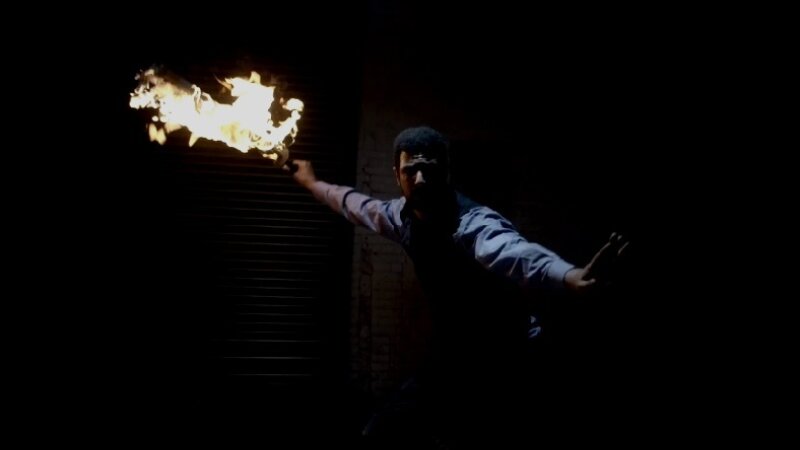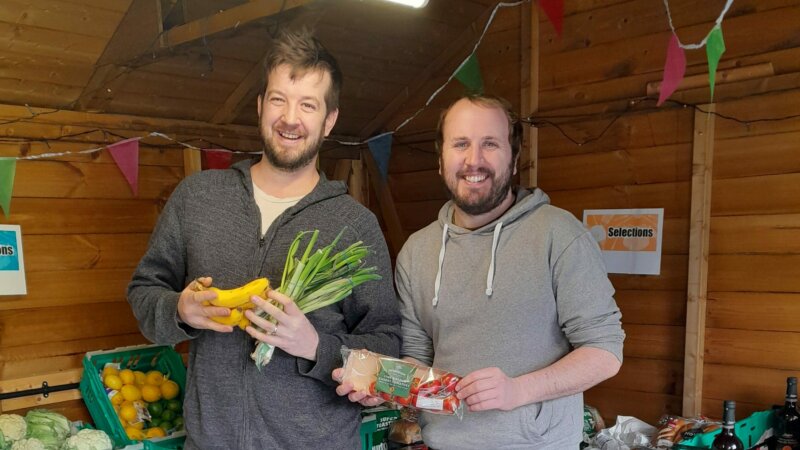Crowdfunding: High-Tech Startups
Last year I wrote a piece for Now Then about Disruptive Technology. I'm considering myself disrupted.
Picture the scene. It's mid October. I'm about as far from Sheffield as you can imagine – in the Brazilian rainforest, at the end of a long, muddy track, several kilometres from a paved road, in a schoolhouse where there's meant to be an online digital lab. Except that for the last few months it's been offline, because none of the locals know how to fix it.
It's steamy and overcast, and the air is full of moisture. The schoolhouse is hemmed in by a riot of dense foliage. I'm crawling around behind desks, tracing network cables, plugging and unplugging computers, checking wonky sockets. Essentially, turning it all off, and then turning it back on again. Technical stuff.
A couple of sweaty hours later, the satellite connection is up and we're online. I grab my phone and connect. Time to tweet. Attach picture... “This sturdy portcullis will keep dungeon invaders out!”
I'm having one of the most extraordinary experiences of my life, in one of the richest ecosystems of the world, and I'm thinking about selling people miniature architecture for Dungeons and Dragons. Then I'm back in the room. Is this the kind of dislocation that Alvin Toffler called ‘future shock’?
In last year's article I talked about digital manufacturing technologies like laser cutting and 3D printing, and suggested that these could be “a game changer” with “unpredictable, open-ended results”. I suggested that these technologies could have all sorts of positive impacts on the city, helping innovative, local manufacturing enterprises to emerge.
At the time I wrote, Access Space, where I work, had just commissioned Refab Space, a low-cost fabrication lab providing enterprising people with a way to get started with advanced manufacturing. It's now equipped with a laser cutter, CNC machine, digital embroidering machine, 3D Printers, Arduino, Raspberry Pi and more.
In 2012 and 2013 Refab Space has helped around 70 people to get to grips with these technologies, all potentially disruptive developments that are shaking things up where the digital and physical worlds collide. Several enterprises have emerged, at least one (local makers and educatorsPimoroni) with spectacular success.
My role in this affair has principally been research. I've been asking which of the technologies we're considering has most potential for incubating local enterprise, and why?
But I've been acutely aware of the criticism often levelled at ‘enterprise advisors’. If you know so much about how businesses start up, why haven't you done it yourself? To have some credibility, I needed to walk the talk. So last October I launched my own enterprise, using the methods and digital manufacturing technologies I've researched, and following a ‘bootstrapping’ methodology (pulling yourself up by your own bootstraps) that means you don't need to borrow any money to get started.
I like bootstrapping because it cuts remote capital out of the game and keeps the value local. In the normal way of things, an enterprise incubation process might go like this:
1. Have a great idea.
2. Make a prototype.
3. Make a business plan – a work of speculative fiction which claims that you're going to have loads of customers.
4. Borrow money from banks or venture capitalists on the strength of your plan.
5. Produce your product.
6. Take it to market and see if it sells.
As you'll realise, this process favours people who can write great plans and pitch – people who can talk a great fight, but aren't necessarily the people who can actually deliver. At that stage, there are two main possibilities:
1. You make money and help to enrich banks and venture capitalists, who aren't local, so they bleed resources from the local economy.
2. You lose money. Tough! You still have to pay the loan back, and face your own losses, which bleeds resources from the local economy.
It seems like either way, the local economy gets it in the neck. Crowdfunding shortcuts the whole process and cuts straight to the chase – will anyone buy your product or not? And my view is that, win or lose, the whole process is healthier for the local area. Crowdfunding works like this:
1. Have a great idea.
2. Make a prototype.
3. Take it to market for a limited time to see if it sells.
The two main results are:
1. If it sells, use the income to produce your product and ship it to your backers.
2. If it doesn't sell, everyone gets their money back. Start again.
Crowdfunding websites like Kickstarter and IndyGoGo act as an honest broker, making sure that you have a simple way to publicise your project, and that disappointed backers (who are your first batch of customers) get their money back if the whole project doesn't prove feasible. You can also use crowdfunding to raise funds for good causes.
Rather than feeding a bunch of talented people into an enterprise lottery that may produce a few big winners, crowdfunding suggests higher chances of success at small scales, creating a local ecosystem of high-tech activity that can sustain itself, and out of which bigger successes will emerge organically. It allows failure to happen gracefully. Instead of saddling enthusiastic innovators with a bunch of debts, it just wipes the slate clean and invites them to have another crack. But we have to strike now, while the iron is hot. If we don't, rest assured people in other cities will. But to do this, we need capital to buy machines, rent premises and get producing. This is where crowdfunding comes in.
It's my belief that to make a crowdfunding project succeed, you have to do something that's fun, that you know about, and that you, personally, are really into. You're going to have to plug the hell out of your new idea, explain to people why it's so cool. If you're not into it then people who are into it will be able to tell, and they're your most important market.
At the risk of not being taken seriously, I have a confession to make: I'm really into Dungeons and Dragons. So the experiment I proposed went like this:
1. Design a product that's based on Dungeons and Dragons.
2. Don't put any more resource into development and marketing, which is beyond the means of one person working in their time off.
3. Look at other products that sell and see what you can produce better using digital manufacturing techniques. (I chose laser-cutting, which, for various reasons, I think has particular potential)
4. Make some prototypes, photograph them, run a crowdfunding campaign for a month and see if anyone wants to buy it.
So I did – and they did! The product is Infinite Crypt and I'm starting to produce this month. In October I sold more than £10,000 worth of miniature archways, doorways, stairs and walls.
This sort of project is highly achievable, and it'll be a massive benefit to the local economy if more people get stuck in. I've done it myself and I've seen how it can work. For the wider community, the most important part of the project is:
5. Find out how crowdfunding can work to kickstart enterprises and tell other people.
From February we're going to be running workshops at Access Space to help enterprising people raise money for new, high-tech manufacturing. At the same time we're also looking for far-sighted supporters who can help sustain Access Space's enterprise bootstrapping work.
This isn't about me or my colleagues keeping our jobs at Access Space. We can always create our own digital manufacture enterprises and go off and make things. This is about making sure that a resource for the city which helps people to grasp a key opportunity can continue to run accessible programs for the benefit of the wider community. So, who's up for crowdfunding workshops? And who's up for sponsoring a programme of enterprise bootstrapping?
Oh, and one more thing. You know I said the Brazilian rainforest was about as far from Sheffield as you could imagine? Near the schoolhouse telecentre there’s an old sugar mill, powered by a waterwheel. Now it's being converted into an industrial museum. Its cast iron gearwheels and steel rollers were imported from England in the 19th century. Guess where they were made.
infinitecrypt.com
access-space.org )





